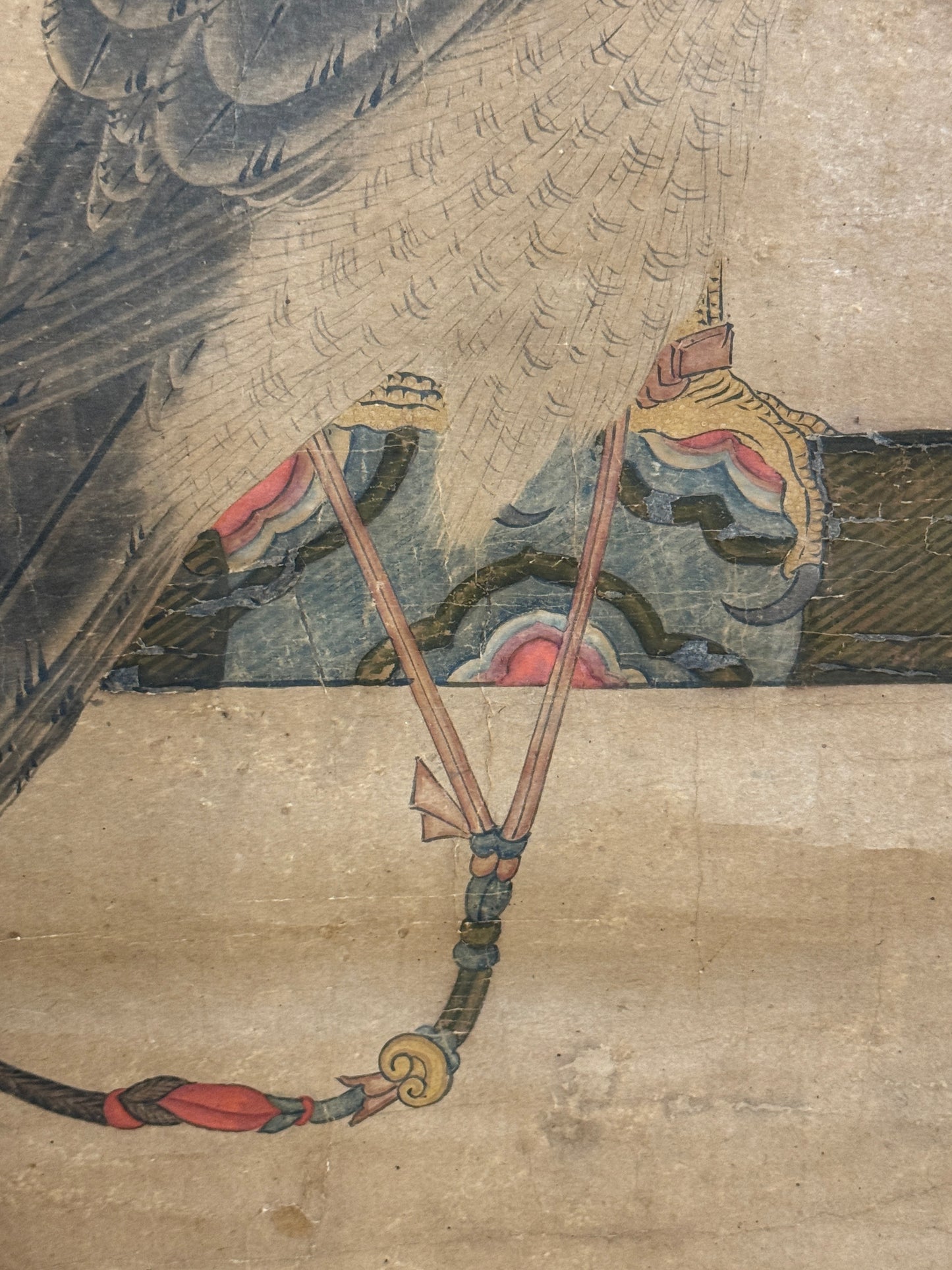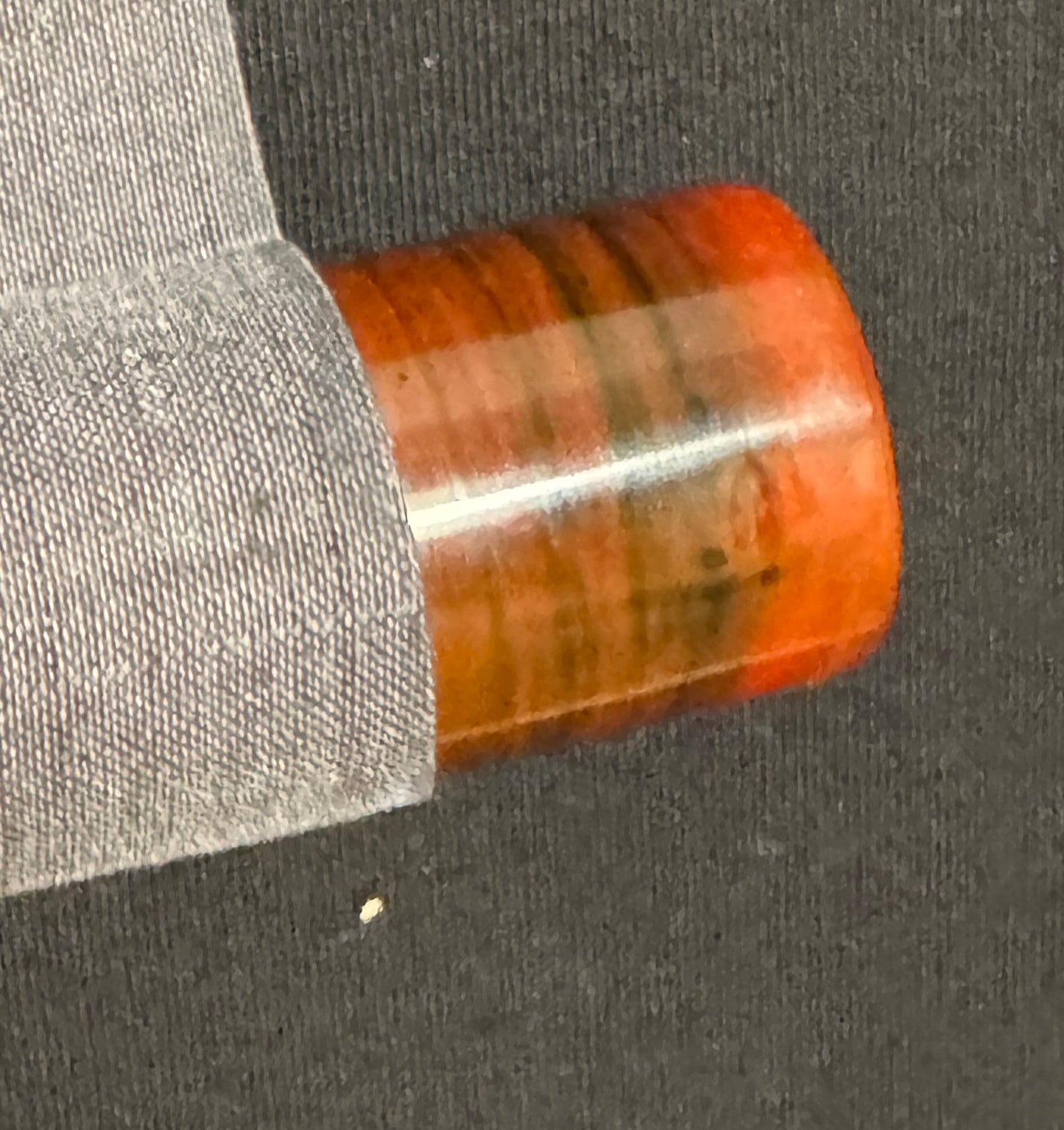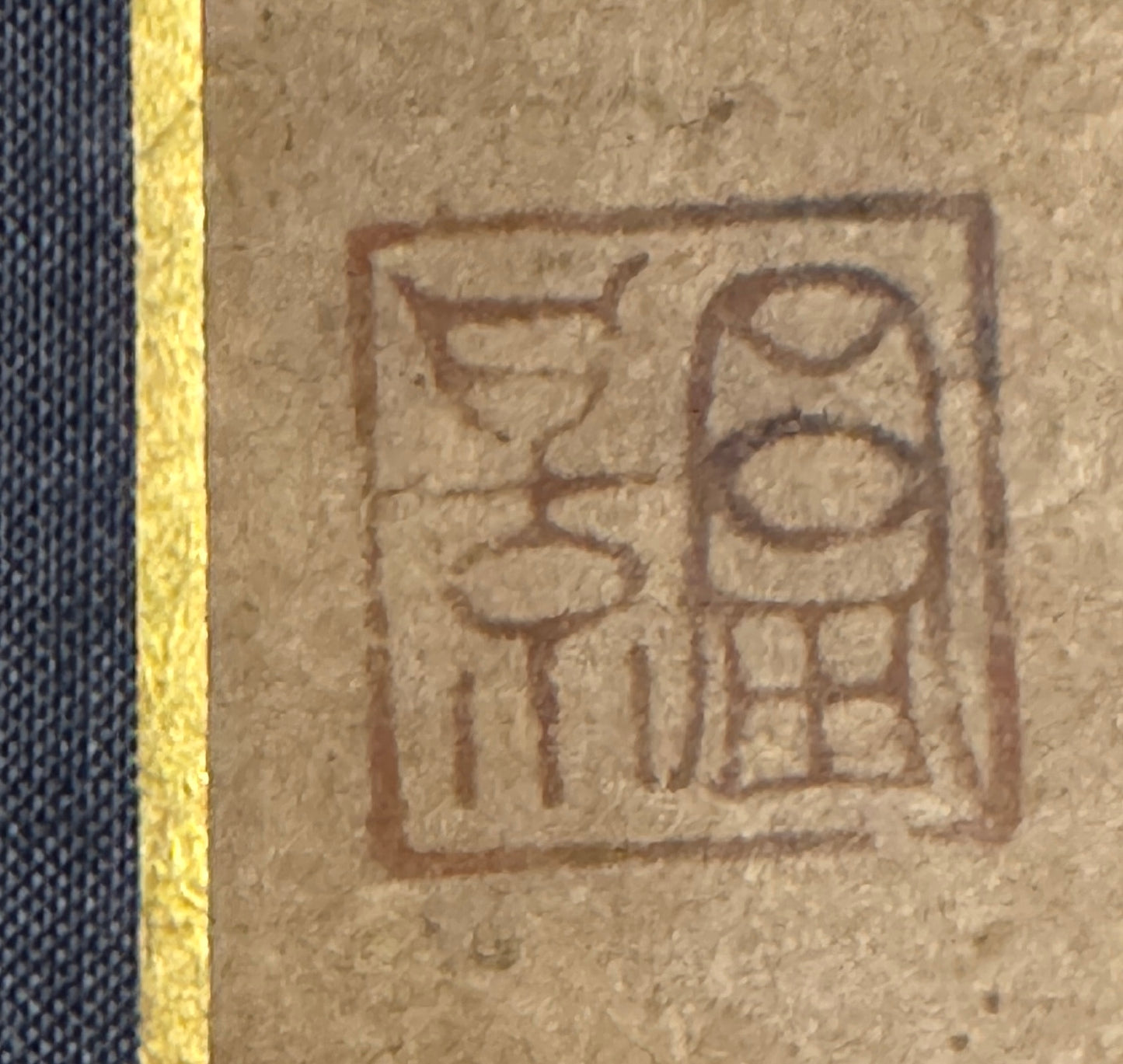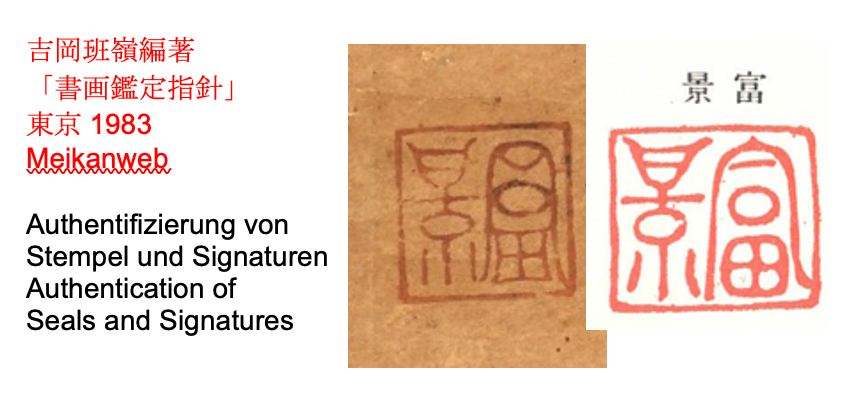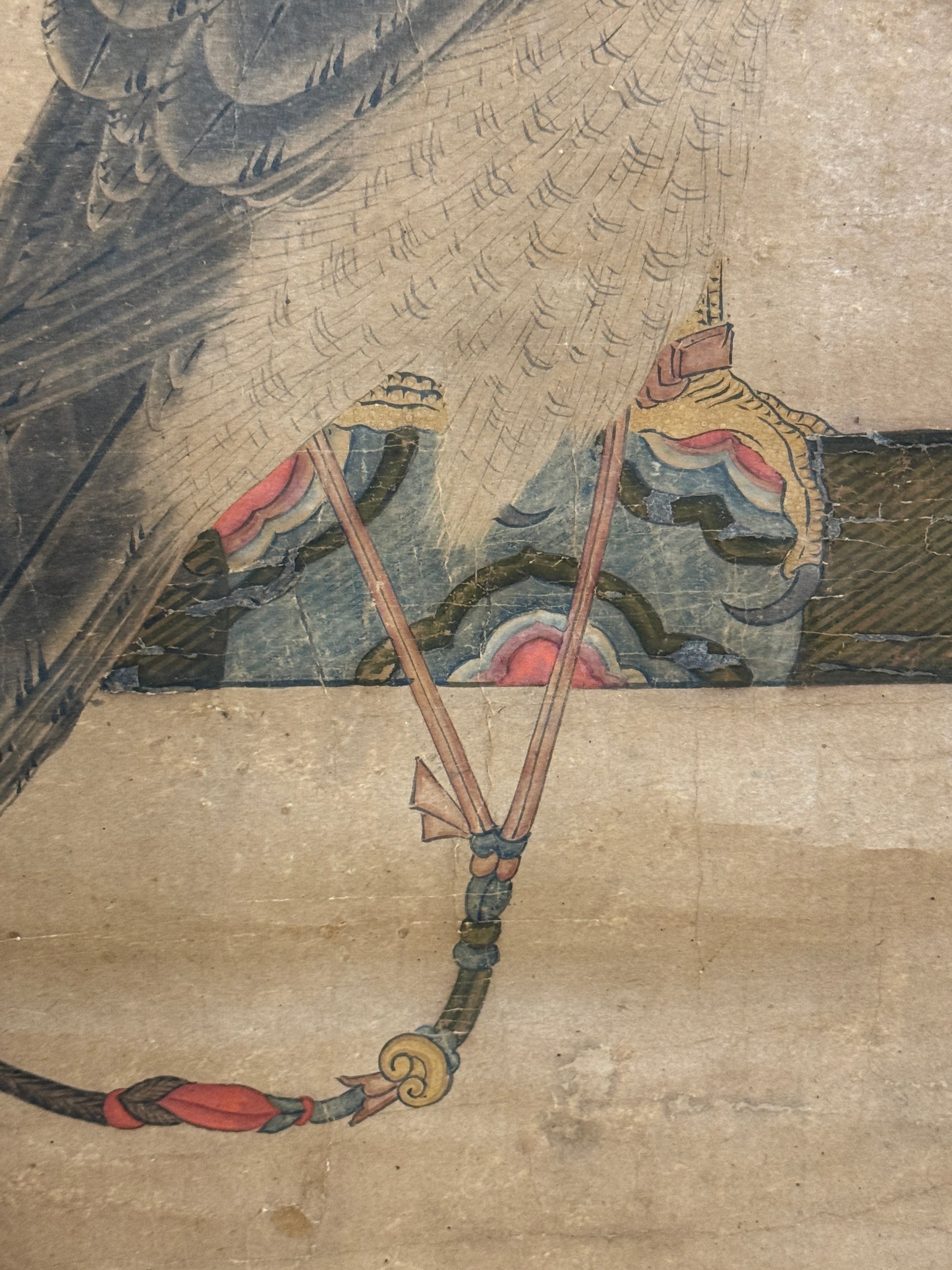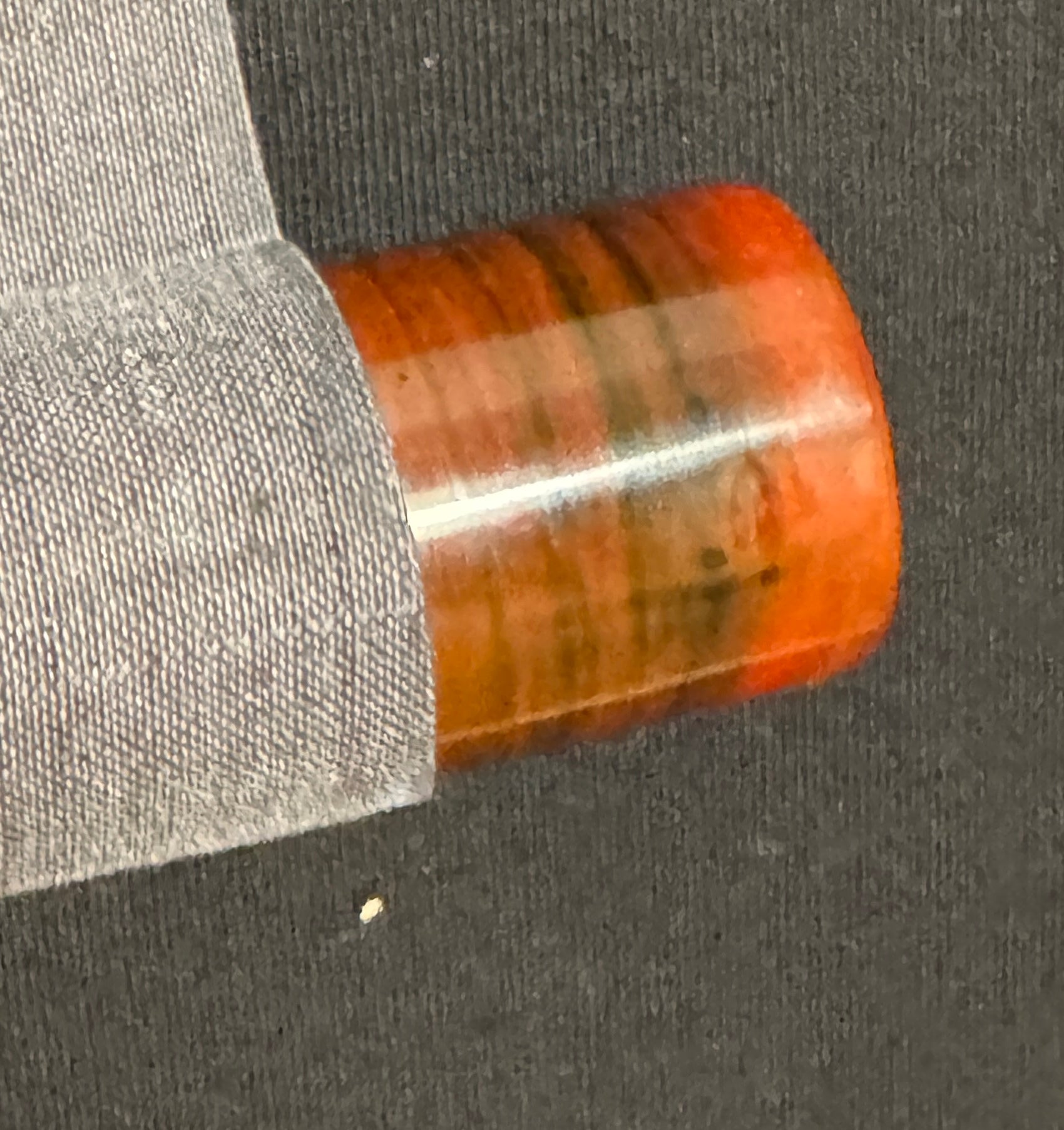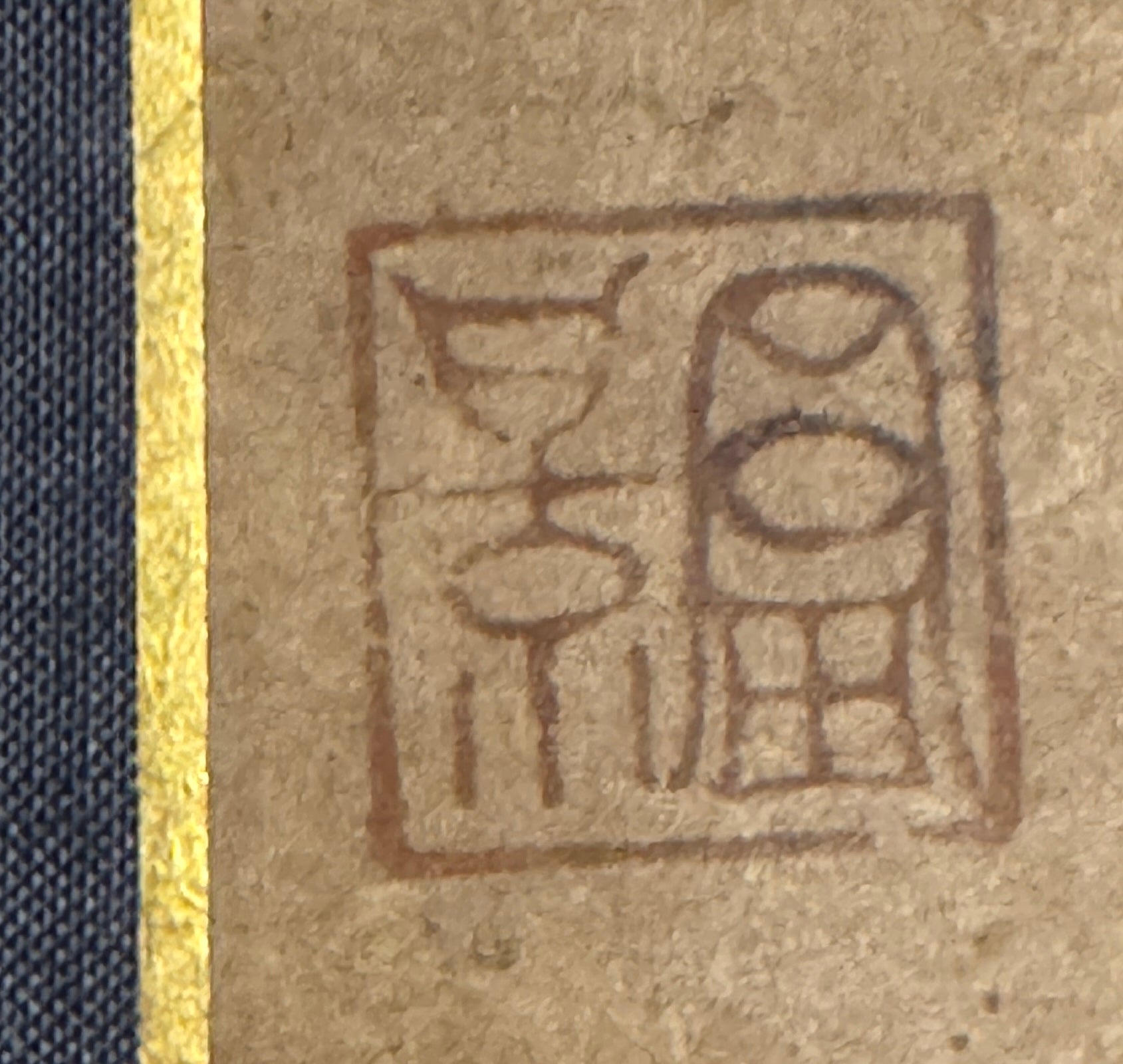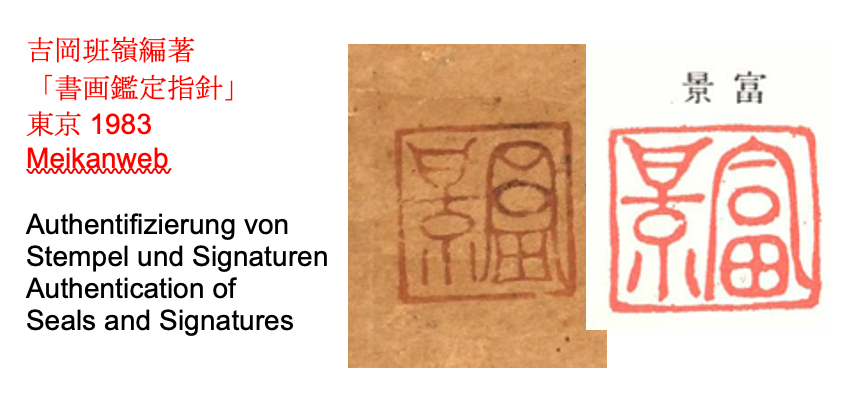Guignard Kyoto Collection
Falcon on decorative pole | Toki Tomikage 土岐富景 (possibly also 土岐頼芸 1501-1582, or 土岐洞文) | 16th century
Falcon on decorative pole | Toki Tomikage 土岐富景 (possibly also 土岐頼芸 1501-1582, or 土岐洞文) | 16th century
Couldn't load pickup availability
Japan's most famous falcon painters lived in the 16th and 17th centuries. However, the authorship of their paintings is often unclear. This painting, too, remains unclear, although the stamp clearly indicates the name Tomikage—the box mentions him as a student of Shūbun, which is common in Tomikage literature. The only thing that is certain is that the Toki family was a highly respected aristocratic line, and if this falcon artist belonged to it, he didn't have to provide identification (like a commercial painter).
This bird painting undeniably exudes dignity and courtly elegance. Like most falcon paintings of the period, it is representational art of the finest kind. The head profile, with its sharp eyes, expresses power and concentration. The attention to detail in the plumage betrays the admiration for the beauty of this bird. The falcon sits on its beam, which is beautifully painted in color—including precious crimson. The ribbons, cords, and rope are tied with a finely crafted brass button. The braiding and knots are accurately reproduced, and a precious cord completes the composition at the bottom.
Crucial to the cultivated aura of this princely status symbol are its carefully calculated dimensions: The aforementioned brass knob in the rope is placed with millimeter precision in the horizontal center, and the distance from the tip of the beak to the right edge is exactly the same as that from the breast to the edge. This exact 7 cm is also the distance from the tip of the wing to the bottom left edge. This centering is partly responsible for the monumental, heroic expression of this falcon's portrait.


